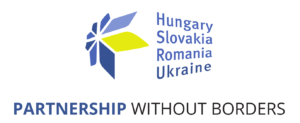The implementation of the Carpathian Star Way project has concluded. We will gradually publish the results from sky brightness measurements and the impacts of light pollution on it. From the experiences of our Hungarian partner and the lectures of Dr. Zoltán Kolláth, we know that mere measurements using SQM devices do not provide much insight. The problem is illustrated in Figure 1. The arrival of intense green airglow completely changed the conditions overnight.

We attempted to identify artificial light sources around the observatory. During clear nights, this is not apparent. Light from artificial illumination successfully escapes into space, and only a small portion of it disperses in the atmosphere (fortunately). In Figure 2, only sources such as Stakčín and Snina can be identified, as well as significantly short-wave Užhorod.


Artificial sources are better identifiable under cloudy skies, as shown in Figure 3. Only closer sources are reflected from the homogeneous layer of low clouds. The closer the source, the higher above the horizon we see the “light cap”. This makes it easy to identify Snina, Stakčín, Ulič, which predominantly emit in the longer wavelength region. The short-wave, blue source is at the border crossing in Ubli. The worst source of light pollution is the village of Kolonica itself, serving as an example of poor reconstruction of public lighting.


